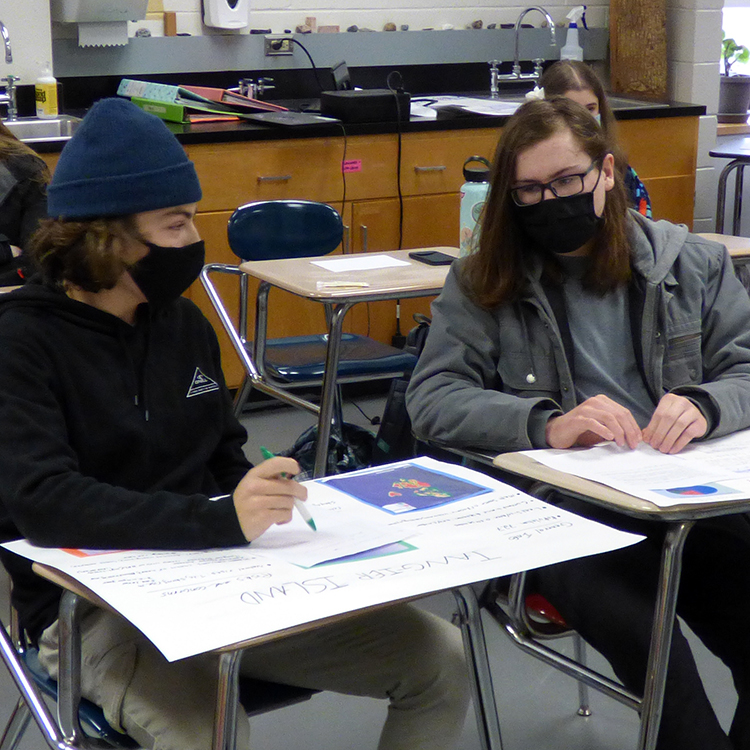Students in Andria Johnson’s Earth and Space Science class are currently learning about the effects of climate change, using Tangier Island in Virginia’s Chesapeake Bay as a concrete example to research scenarios and discuss options.
The inhabitants of Tangier, who rely on soft-shell crabs and tourism for their income, face a unique challenge in the climate debate. Students discuss whether the island inhabitants are best served by investing in a sea wall and other sea-level rise mitigation structures, or if they should abandon the island.
Tangier island provides valuable tidal salt marsh habitat for waterfowl, such as pelicans, blue herons, osprey, rails, egrets, as well as several rare varieties of ducks and geese and is, therefore, a popular destination for ecotourism.
But over the last century and a half, the island’s landmass has been reduced by 67%. The Army Corps of Engineers has concluded that Tangier has between 25 and 50 years remaining before sea-level rise, erosion, and the increasing severity of flooding will render the island uninhabitable.
It was inspiring to see students use complex data research and engage passionately with a subject that will likely have much broader applicability in the years to come.



